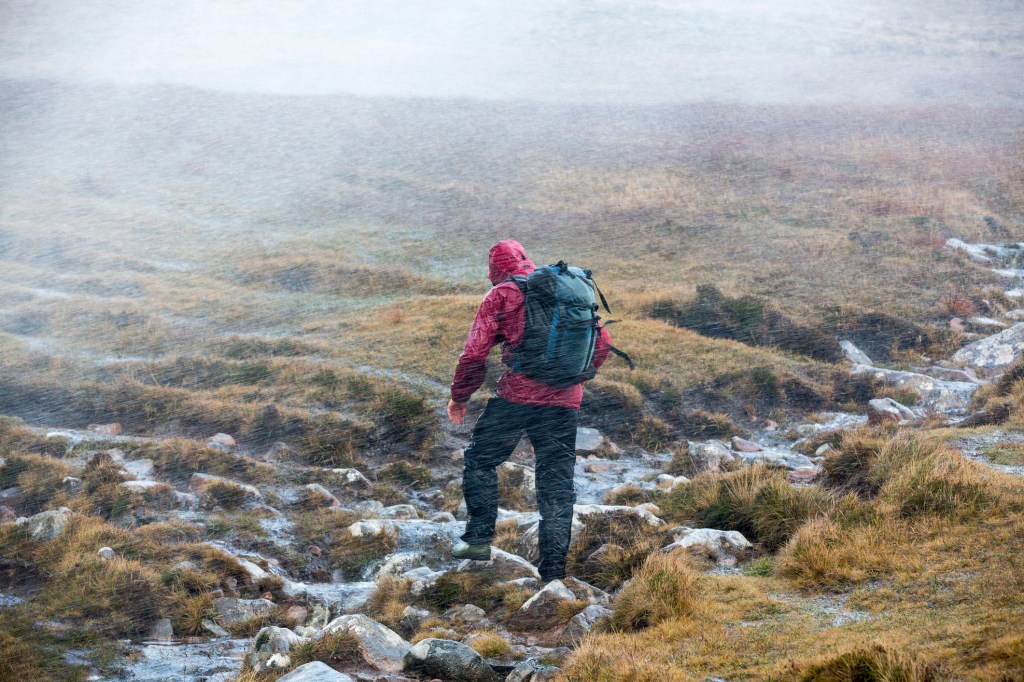

It’s probably no surprise to learn that over the years, Bear Grylls has occasionally gotten lost in the wild.
Videos by Outdoors
The fact is, people regularly get lost in the outdoors, and without the right survival skills, they can quickly become hypothermic or dehydrated—or worse.
“When that happens, it’s almost always because they’ve made one simple mistake: They didn’t stop as soon as they realized they were lost,” writes Bear in How to Stay Alive.
Don’t panic
Bear’s best advice if you get lost is to swallow your pride, and most of all, not to panic. “That moment when you first realize you’re lost can be scary,” he says. “It can make people lose their heads. It can be disorientating and frightening.”

To control panic, he uses the acronym S.T.O.P.
- Stop: Don’t make the situation worse by continuing on and getting even more lost.
- Think: Your brain is the best tool you have for survival, so use it.
- Observe: If you have a map, look for big stand-out features on the landscape—like a large lake, peak or something man-made, like an antenna—and orientate yourself from there. Don’t pick something small like a stream, where there could be lots more in the area.
- Plan: Come up with a strategy for how to get unlost or seek rescue. This will also keep your morale up.
Take some deep breaths and drink some water, and recoup your wits. “You’re not lost yet, you’re just temporarily confused,” he says.
Retrace your steps
Bear says that it is natural human instinct to keep going, as people don’t like going backwards. “We don’t like retracing our steps,” he says. “If we’re intending to go from A to B, we feel we’ve failed if we turn back to A, so we risk ending up at C. We talk ourselves into thinking that we’re going the right way.”
Retrace your steps to the last place where you were sure of your location. Look out for landmarks that you recognize. Re-walk an established trail or one that you’ve made.

When you are lost, this is vital. “Don’t keep wandering blindly into the unknown,” says Bear. “The chances of you stumbling across the right path are minuscule.”
Stay where you are
If nothing is looking familiar or you’re unsure where you came from, don’t keep wandering. Assuming someone else knows where you are (or others may be in the area) and it’s otherwise safe, stay exactly where you are while you wait for rescue.
Note the time and keep track of it. You won’t find your way in the dark, so if you have to stay overnight, make sure you have enough daylight to find or make a shelter.
Do your best to conserve your energy—it’s important not to exhaust yourself, particularly if your resources for food and water are limited.

Once you’ve secured shelter and foraged for food and water, light a smoky fire to signal your location to rescuers. Use a whistle, if you have one, to get attention, rather than shouting, if you detect others in your vicinity.
Move on if you must
If you’ve deemed your location unsafe or rescuers wouldn’t know where to look, you may decide you need to self-rescue.
Keep any gear you can safely carry, such as your backpack with you. Don’t leave it behind, even if you’re just walking a few feet to get a better look around you. If you can’t find it laterw, you will be in worse trouble. “Remember the Commando ethos: never get separated from your kit,” says Bear.
Work out where north, south, east or west are without a compass. This might help you relocate a village you’ve traveled through, or to find another point of safety.
Find higher ground, such as a hill or climb a tree, as a vantage point to determine what’s around you. Don’t take risks doing this though. If you spot a larger body of water, such as a lake or river, head for it—often there are settlements near rivers. Once you arrive at the banks, follow it downstream. If the water is slow-flowing, make a raft, if you need to.
If you see power lines in the vicinity, follow them downhill. Even if they cross empty terrain, they eventually lead somewhere.
As you travel, mark your trail. Not only could this direct rescuers toward you, it offers a way for you to retrace your steps if needed. Look back frequently so that you know what your path looks like when you are going the other way.
More from Bear Grylls:
- How to Build Shelter in a Forest
- How to Survive Sub-Zero Temperatures
- What to do If You’re Bitten by a Snake
- How to Navigate Without a Compass
- How to Deal with Injuries in Survival Situations
- How to Find Water in the Mountains
- Making Shelter in the Snow
- Priorities of Survival
- How Bear Grylls Lights a Fire
- How to Build a Jungle Raft
- Bear Grylls: Food in the Mountains Pt. 1
- Bear Grylls: Food in the Mountains Pt. 2









